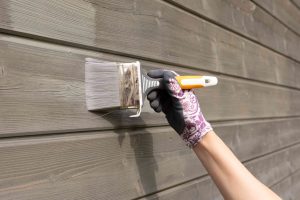As awareness on environmental issues grows, homeowners are increasingly looking for ways to live more sustainably. From eco-friendly household items to reducing your carbon footprint, sustainable choices bring small but important contributions towards the preservation of our planet. Here are some ways you can do that too.
Energy efficiency
One of the most important aspects of sustainable living is energy efficiency. You can improve the efficiency of your home in various different ways. This can be as simple as replacing old light bulbs with LED alternatives, which use up to 75% less energy yet last much longer. Additionally, you can upgrade your appliances to energy-efficient alternatives – look for ones with Energy Star rating. This will not only reduce your energy consumption, but lower your bills too.
Water conservation
The way you use water can also impact the sustainability of your home. Reduce your usage by installing low-flow taps and shower heads, without compromising functionality. For a more innovative solution, choose a macerator pump as a way to reuse waste water. This smart solution collects water from showers or washing machines in a dedicated tank and repurposes it for flushing the toilet later on.
Renewable energy sources
Renewable energy is a powerful way to make your home significantly more sustainable. Such technologies as solar panels are an excellent solution, converting sunlight into electricity to power your home. While the initial investment might be bigger, it will lead to substantial long-term savings on energy bills as well.
Sustainable materials
When renovating or decorating, always opt for sustainable materials. Choose providers that source their materials responsibly and ethically. Additionally, go for durable finishes that are known to withstand daily wear and tear better. This will reduce the need to keep redecorating every few years.
Waste reduction
Homeowners can reduce their waste production by choosing household items that are reusable or recyclable. Try and avoid the use of disposable materials, particularly single-use plastics. There are many sustainable alternatives for everyday household items, like silicone food covers instead of plastic wraps. Moreover, implement a proper waste management system that will allow you to separate different waste for appropriate disposal: recyclable, compostable, etc.
Smart technology
There are many ways smart technology can help your home become more sustainable. For example, modern thermostats can learn your habits and adjust heating or cooling as and when needed to optimise energy usage. Similarly, smart power strips can reduce standby power consumption from electronics.
Green spaces
Don’t overlook the importance of your outdoor spaces, too. Creating greener environments outdoors can contribute to the carbon footprint of your home. If you have a garden, plant trees and wildflowers to create habitable spaces for the local wildlife. Another great initiative is growing your own fruit and vegetables, which can reduce food miles and packaging waste. Besides, you will also get cheaper and tastier food out of it!
Conclusion
Making your home greener can certainly mean long-term investments, but it can also be just small changes in your everyday habits. Regardless of how much you are able to do, remember that you are contributing to a larger positive impact on our environment.
Read the full article here














